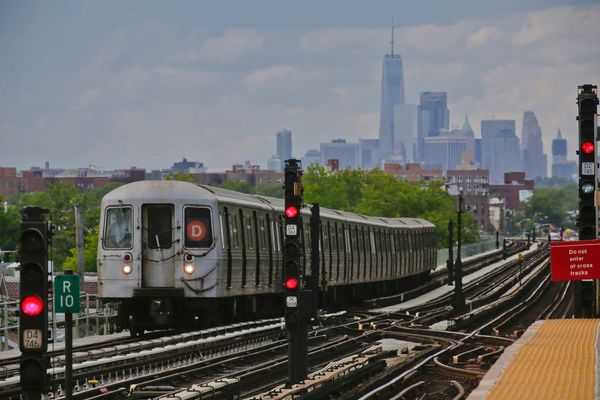The federal court system plans to spend $35 million less from its court security account in fiscal 2026 than it did the previous year unless Congress provides additional funding, at a time of heightened concerns about the safety of judges.
Judge Robert Conrad, the director of the Administrative Office of the U.S. Courts, outlined the judiciary’s interim court security funding plan in a memorandum obtained by CQ Roll Call and wrote that “requested program increases and security systems and equipment needs are deferred under this plan.”
The interim plan assumes the judiciary will have to endure another hard funding freeze in fiscal 2026 for the court security account, which had an enacted level of $750 million in fiscal 2025 for court security officers and equipment at courthouses and other topics.
But now the court system has spent down an additional supplemental funding of $112.5 million Congress approved in 2022 for courthouse hardening, so there are lower balances carried forward from previous years to spend on security, according to the Administrative Office.
Not all of that supplemental funding has been used up, according to the office, the remaining money is expected to be delegated in fiscal 2026.
The Executive Committee of the Judicial Conference signed off on the interim financial plans for fiscal 2026 in mid-September, Conrad wrote in the memo.
A spokesman for the Administrative Office said in a statement that “any spending estimates are highly fluid.”
“Funding for court security can’t be known until Congress finalizes its plans [in] the coming fiscal year. The Judiciary is advocating strongly for its full security request for FY 2026,” the spokesman said.
The judiciary asked Congress for $892 million for its court security account for fiscal 2026, a 18.9 percent increase compared to the enacted fiscal 2025 level.
The judiciary, in its fiscal 2026 request, says that extra money would go toward security system maintenance and repair, courthouse hardening and security infrastructure for new courthouses, among other equipment.
The planned spending reduction comes at a piercing moment for judicial security: Judiciary officials this year have raised serious concerns about threats facing federal judges, and high-profile acts of political violence have stoked broader security fears in various parts of government.
Judge Amy St. Eve of the U.S. Court of Appeals for the 7th Circuit told reporters last month that a continuing resolution passed by the House includes increases for security at the Supreme Court and for the U.S. Marshals Service, which helps protect judges.
But requested increases for court security, IT infrastructure and public defenders were not included in the legislation, she said.
A standoff over extending health insurance subsidies has kept that CR from passing in the Senate, resulting in a partial government shutdown and more uncertainty about funding levels for fiscal 2026.
St. Eve, who leads the budget committee of the Judicial Conference of the United States, told reporters that the largely flat funding in the CR would lead to additional delays in security upgrades, which have been needed for years at courthouses across the country.
The court security account pays for security staffing on a day-to-day basis, along with infrastructure upgrades like metal detectors, cameras and upgraded locks, St. Eve said.
“All of that equipment is what suffers because we don’t have the money to pay for it, so all those projects get kicked to the next year,” St. Eve said.
Earlier this year, in written testimony, she told lawmakers that the court security account was operating at a hard funding freeze for the second year in a row.
The judiciary has had to redirect money intended for equipment updates and instead funnel it toward court security officers and the Vulnerability Management Program, she told lawmakers at a hearing in May.
“That equipment will become more obsolete and increase security risks at courthouses around the country,” she told lawmakers at the hearing.
Federal defender offices weathering a long-running hiring freeze would see no staffing influx under the interim financial plan, according to Conrad’s memo.
The fiscal 2026 interim plan would preserve current staffing levels for federal defender organizations, but would also maintain a hiring freeze for those offices, Conrad wrote.
Also under the interim plan, Conrad said payments to private sector attorneys who provide legal representation to poor defendants would have to be “deferred up to approximately three months if the interim plan is in place for all of FY 2026.”
Michael Macagnone contributed to this report.
The post Federal courts plan to have less to spend on security this fiscal year appeared first on Roll Call.







